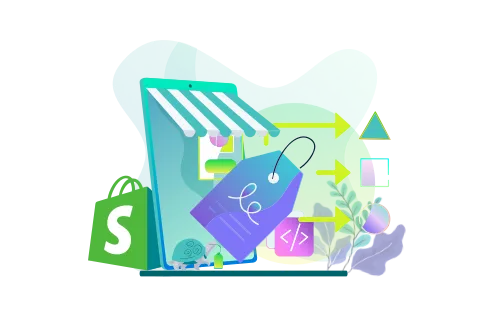The last couple of years have seen plenty of new trends in ecommerce, such as AI-powered features and higher personalization. However, one vital trend is making both the world and the industry better - sustainable ecommerce. Following the tenets of this approach, companies can limit their negative impact on the environment and build better practices in the industry.
Research shows that sustainable ecommerce platforms are essential for further growth and innovation. Moreover, these practices have already become standard for many European businesses, though the rest of the world is still catching up. Today, GenovaWebArt will ensure you’re not left behind with our primer on making your Shopify store more sustainable.
Having spent twelve years building Shopify apps and stores or redesigning them, like we did for Winky Lux and Early Rider, we know much about ecommerce. In this article, we’ll share tips on introducing eco-centric features to limit your carbon footprint and overcome associated challenges. Let’s dive right in and keep ecommerce green.
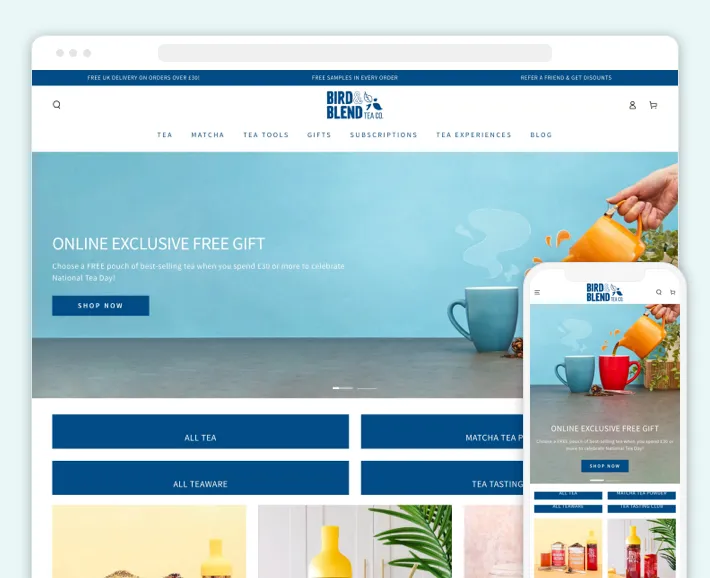
Table of Contents
- Understanding Sustainable Ecommerce
- Benefits of Sustainable Ecommerce
- Consumer Demand for Sustainable Ecommerce
- Implementing Sustainable Practices
- Case Studies and Success Stories
- Measuring and Monitoring Sustainability
- Challenges and Solutions in Implementing Sustainability
- The Future of Sustainable Ecommerce
- GenovaWebArt Experience
- Conclusion
- FAQ
Understanding Sustainable Ecommerce
To start with, let’s define what sustainable ecommerce is and how to employ this concept in your store. It’s a set of practices centered around increasing the environmental sustainability of an ecommerce business. That can include changing your packaging and opting for cardboard boxes instead of single use plastic.
Other core practices include optimizing shipping routes or using renewable energy for production and deliveries. A business that adopts these makes a positive impact on countering climate change and, as a result, earns the respect of customers.
Benefits of Sustainable Ecommerce
So, what are the advantages of development of a Shopify store that’s eco-centric and sustainable? While some are right there on the surface, moving to an e commerce sustainable business model has some hidden positives. We’ll share a few that we’ve seen in practice.
Customer Loyalty
McKinsey & Company’s recent study on consumer behavior clearly shows a rising interest in eco friendly brands. Consumers are more likely to support the Shopify store that’s offering sustainable products, as well as promising to cut down on its emissions. As a result, going green means your business will be more competitive and cultivate a loyal customer base.
Lower Shipping Costs
Eco friendly ecommerce assumes the use of renewable energy, as well as optimizing the supply chain as much as possible. As a result, you’ll be spending less on fossil fuels and the actual route-based expenses. This includes vehicle maintenance and overtime pay, two major expenses for a big commerce company.
Brand Reputation
Though your end goal in implementing these sustainable practices should be genuine eco-friendliness, it’s hard not to notice the image impact it has. You’ll be able to market your products with the bonus point of your company being climate-neutral.
This, in turn, boosts awareness of your brand, reaching beyond your regular audience. It’s particularly impactful, thanks to social media, where influencer marketing can propel your company to new heights.
Consumer Demand for Sustainable Ecommerce

As with any other industry or market, consumers are the main drivers of change. If they want a brand that’s directly counteracting greenhouse gas emissions, it’s in your best interests to give them one. However, do customers care about environmental efforts? Well, all data points to yes, such as this research from the Breakthrough National Centre for Climate Restoration.
This interest in sustainable products and practices means companies must catch up and get on board. A whopping 78% of US consumers have even said that they’re willing to pay more for sustainable goods. This means you can incorporate any expenses associated with retooling your business into the final price, to a point.
While eco friendly ecommerce is seeing high demand, it’s also resulting in increased standards. This means it’ll be up to you to implement major changes and stick to them while also following the new developments in this field. For example, things like electric trucks are becoming more and more prominent.
As a result, it’s a constant race to match consumer expectations if you want to stay competitive. Thankfully, it’s not that difficult to get started. We’ll tell you exactly how to do it.
Implementing Sustainable Practices
So, how do you rejuvenate your business with eco-friendly practices to reach your goals of sustainability? Well, here’s just one example of an ecommerce roadmap that may work for you.
Start with Shipping
Consider all the processes and materials that go into shipping a single package. You generate a lot of waste if you don’t use cardboard or other recyclable packaging. Same goes for trucks that run on fossil fuels. These two points are easy enough to change, although replacing the fleet with e-trucks may be costly.
Smaller changes include the switch to thermal printers, which use less ink. Since some waste is unavoidable, you can look into possible waste recovery programs in your area to lessen your impact. Similarly, your shipping partners might offer eco-friendly options, making it easy to start with environment sustainable ecommerce without much investment.
Recycle and Reuse
Creating a circular economy around your materials helps curb unnecessary waste. For one, make sure your packaging can be reused if a customer returns their order. It’s also helpful to launch a program where clients can send in materials to be reused, be it packaging or old products of yours. This is particularly crucial for clothing stores, as fast fashion is a huge contributor to climate change.
Do an Energy Audit
Verify that your store isn’t using up excess energy for no reason. That can include manufacturing and packing machines, as well as smaller devices, such as label makers, printers, and even computers. After all, your store is online thanks to Shopify so, unless you’re using them, your PCs and laptops don’t need to be on 24/7.
Consider an Offset Fee
One way to deal with any emissions your company generates is to offset them. You can add a charge for this to the checkout, although it might be best to gauge your customers’ response first. While many consumers are ready to pay a little extra to support a healthy brand ethos, some target audiences may be hesitant to shoulder the cost.
Case Studies and Success Stories
We understand that switching to eco friendly ecommerce could seem like a shot in the dark. However, you’d be far from the first to do it. Even industry giants like Amazon have done it, and quite successfully too. In this section, we’ll introduce some companies that took the leap and adopted a green business strategy.
Patagonia
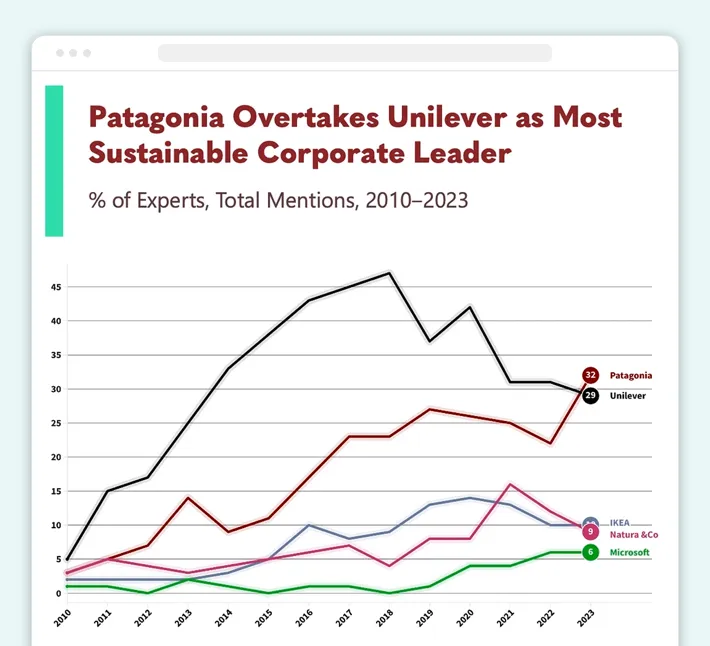
Though Patagonia already boasts clothes that are ¾ recycled materials, the company’s always been a sustainability champion. For example, it had a stunning and effective marketing campaign a while back where it literally asked people not to buy their jackets. This was obviously not a self-critique but rather a shot at consumerism and how people tend to overspend.
That campaign, combined with a years-long Repairs program, highlights the brand’s understanding of this important issue. As a result, it has a reputation as a champion of environmental causes. As for the profit side of things, Patagonia has been growing consistently, even as it implements more and more green practices. This is a company that proves brand loyalty is a major factor, especially when you earn that loyalty.
Anheuser-Busch
You might not recognize the name instantly, but Anheuser-Busch is positively massive in the beer world - Budweiser, Beck’s, and Stella Artois are just some of its products. How does a beer business help save the environment? The answer is simple — it reformats to use less water. Since 2012, the company has been cutting its consumption and growing efforts to reuse the resource.
In addition to that, Anheuser-Busch has set some lofty goals for 2025, including a full commitment to use only renewable energy and establish a circular economy for its packaging. It’s a major move and one that pushes the brand to the forefront of sustainable ecommerce. Anheuser-Busch hopes that it may achieve a net-zero situation by 2040.
Unilever
We’re well aware that going all-cardboard all-green isn’t an option for some businesses. A lot of the time you can’t go without plastic, as is the case for Uhilever. The company sells a lot of goods that require special packaging, from ice cream to shower gels. Thankfully, recycling and reuse come to the rescue, helping the plastics-dependent company.
Right now, Unilever is already featuring used plastic in some of its products, with a plan to expand its reuse and refill program by 2025. This encourages consumers to buy one container and then keep using it to fill up on Unilever products instead of buying more plastic. While some people assume that eco friendly packaging for ecommerce is cardboard only, Unilever has shown that’s not really the case.
Measuring and Monitoring Sustainability
The work doesn’t stop once you make some adjustments to your business and “go green.” After all, like any other process, you need to measure how effective your transformation is. Let’s take a look at which metrics and tools can help you determine that and track your success.
Carbon Footprint
This is the total effect of your transportation, packaging, and energy consumption emissions on the Earth’s flora & fauna. If you notice a downward trend in this number, you’re on the right track toward sustainability.
Waste Generation
Even the most well-meaning stores will inevitably generate trash—whether in the form of used packaging or discarded and faulty products. This number might even be somewhat boosted for diligent companies with high-quality control. After all, higher standards mean more goods that don’t meet those standards. To keep this number down, consider selling substandard goods at a discount.
Recycling Rate
Recycling directly counters whatever refuse your business creates. To determine how well you’re handling this crucial green practice, divide the weight of materials you recycle by the full weight of the waste you generate.
Product Lifecycle
This metric also influences your customer lifetime value, as products with a lot of longevity may not entice instant return purchases. They do, however, let customers know your goods are of high quality, and when they need something else, they will turn to you. As for the sustainability side of it, it’s not hard to see the connection between an item’s longevity and its “green” status.
If a product falls apart, literally or metaphorically, within a year of purchase, it generates little value and a lot of emissions. A Shopify store should strive to provide goods that offer long-term utility and thus minimize their impact on the environment. This way, you both offer customers quality and cut down on your emissions and waste.
Measurement Tools
You can build multiple custom apps to track your emissions and sustainability efforts or even use existing ones. For the former option, it might be best to hire a professional team to do it, one with experience in crafting Shopify apps and stores. For the latter, you can use apps such as Shippo and AfterShip to make your shipments and tracking more effective and eco-friendly.
One of the lesser-known apps is Carbon‑Neutral Shipping, also known as Cloverly API. This helps eliminate harmful emissions from your operations. Meanwhile, Greenspark is a great tool to loop you into a sustainable economy. It offers a personal dashboard to track your company’s reuse of plastic, tree planting, and carbon offsetting.
Challenges and Solutions in Implementing Sustainability
Despite sustainability being a good cause and many consumers saying they are on board, it’s not all smooth sailing. Many companies run into issues when trying to “go green.” Thankfully, these aren’t unsolvable, and many of them simply require a bit of know-how. GenevaWebArt is a veteran in the ecommerce industry, and we’d like to share some tips on overcoming any barriers to sustainability.
Lack of Customer Trust
This challenge has become more relevant in recent years, as many large corporations have turned to “greenwashing.” That means they claim to be sustainable without actually doing the work. Sadly, their fibs have led some customers to distrust companies that suddenly turn to sustainability.
Thankfully, this challenge is easy enough to tackle. First, communicate your shift early, letting customers know why you decided to take this step. Second, remember to get certified for your recycling and emission-curbing efforts. This will help legitimize your company’s green practices and give customers proof of your intentions.
Redesigning the Store
We’re not talking about full retooling, of course, but sustainable ecommerce assumes you’ll make at least a few major changes to your site. That includes changes to the product display pages, where you can inform customers how you sourced raw materials and whether this item is climate-neutral. Similarly, checkout apps that calculate carbon emissions from shipping will be a good addition.
Apps from Shopify’s marketplace can cover much of this, but companies that want to preserve their brand image and identity might want to go for custom development. It will let you have new widgets and sections that blend in and feel natural in your e-store. Plus, you can set up precise data collection to better understand how these changes influence your company.
Managing Prices
Initial investments into green alternatives for packaging and shipping can be on the higher side. That often leads companies to want to hike prices to recoup the expenses. However, that could potentially turn off some customers. Instead, consider how to cut costs at the implementation stage.
This can include partnering with a delivery service on terms beneficial to you or buying eco-friendly used equipment for printing, packing, and manufacturing. You’d both save money and help the environment, as buying used equipment helps prolong its life.
The Future of Sustainable Ecommerce
Before we finish up, let’s talk about the future of sustainability. After all, you’re taking on these efforts to make a better future for the planet. So, let’s see what that future holds for sustainable technology and its use in ecommerce.
Emphasis on a Circular Economy
More and more companies will work toward establishing a full circle in their supply chain. The end goal is, of course, to reuse recycled materials that you have already used, perhaps even multiple times. Having your packaging come back for another round helps prevent waste and saves money to boot. Plus, buyback programs will gain steam as a means of enticing customers to help with recycling.
More Variety in Eco Packaging
While right now cardboard is king, there have been enormous strides in making packaging out of the strangest materials. Bioplastics is one of the more refined and high-tech options, but there are varieties like mushroom-based and edible packaging. This will open up the market and deliver more affordable choices for companies to use. Plus, recycling will become even simpler when you can just chuck used-up packaging into a compost bin.
Emphasis on Second-Hand Goods
This won’t affect every single e-store as certain industries simply don’t make reusable items. However, those that do will see rising demand for used goods and can use it to great effect. Establishing a separate section on your website for “pre-loved” items will boost your conversion rate and provide quality products at a fraction of the price.
GenovaWebArt Experience
Over our 12 years of experience, GenovaWebArt has learned that each ecommerce project is unique. We’ve helped launch plenty of projects, including stores selling teas, notebooks, bikes, and so much more. And every single one required a personal touch, be it a customized checkout or a fully redesigned landing page.
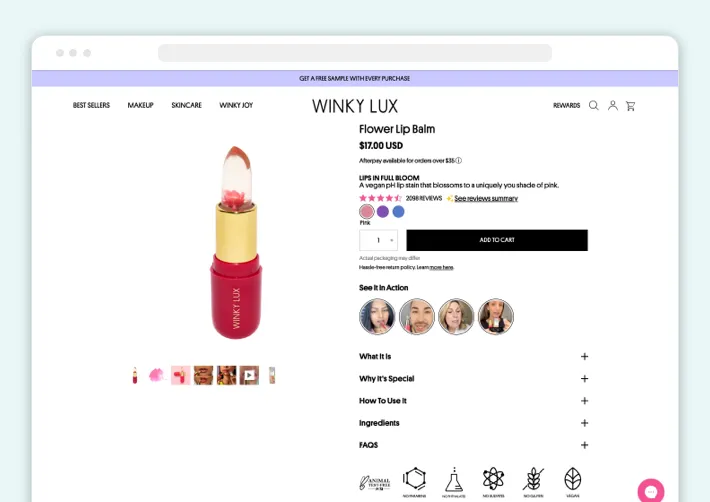
Among our favorite projects is Winky Lux, a beauty ecommerce store on Shopify. This forward-thinking cosmetics marketplace features cruelty-free items and sustainably sourced materials. Our team helped them get those products to customers with a custom-made flexible discount system. We also handled redesigning the website to make it more sleek and intuitive.
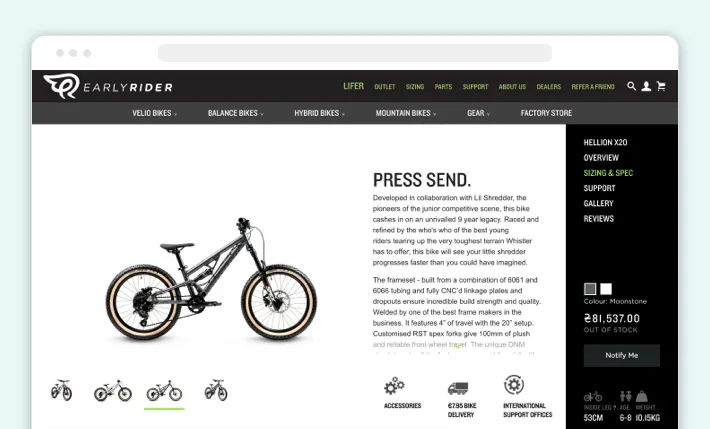
We also helped Early Rider establish a 2.0 version of their store, featuring a full redesign with JSON templates. These optimized the site’s load times while making it easier for the team to add pages and functionality. That bit was also on us, as GenovaWebArt developed custom apps for Early Rider. The main goal was simplifying order and stock management to accommodate large volumes of customers.
Thanks to these custom tools and PDP templates, Early Rider can easily create hundreds of product pages and manage hundreds of orders with no hassle. That volume only keeps rising as our team internationalized the site to help the company expand. Nowadays, they service more markets than ever, all thanks to a speedy, flexible Shopify store from GenovaWebArt.
Conclusion
Shopify’s ecosystem and ecommerce, in general, support green practices. There are custom apps to help track your progress and specific metrics to follow along. Since customers are also on board with the green transformation of businesses, your first steps should go smoothly.
However, true commitment to sustainability requires custom solutions and major shakeups in your store’s operations. You can learn how to make ecommerce more sustainable with consultation from GenovaWebArt. Then, once you have a full plan for your “green makeover,” turn to our specialists to redesign your store with an emphasis on sustainability.
We can implement custom checkout flows that showcase your diminished carbon output, allow users to pick eco-friendly shipping options, and highlight the importance of sustainability. As a result, your brand will enjoy a strong reputation as a champion of a good cause. That leads to both an increase in sales and a more streamlined, ecological working process.
Get in touch and start your sustainability journey today with GenovaWebArt.
Frequently Asked Questions
How can consumers support sustainable ecommerce?
How can we make sure that ecommerce is truly eco-friendly?
This is obviously a bit harder to do when shopping online, as you don’t see the product in full. However, you should be able to find relevant information in a store’s About section or on similar pages. It would be, mildly put, surprising for a company to pursue eco friendly ecommerce and not brag about it. And that’s okay! Showcasing your good deeds inspires others, after all.
What products and services can be supported in a shop on Shopify with environmental sustainability in mind?
It’s also crucial to remember that your store might have practices that are friendly to nature, but your suppliers might not. Make sure to verify your supply chain is committed to sustainable goods, and don’t be hesitant to advertise it.
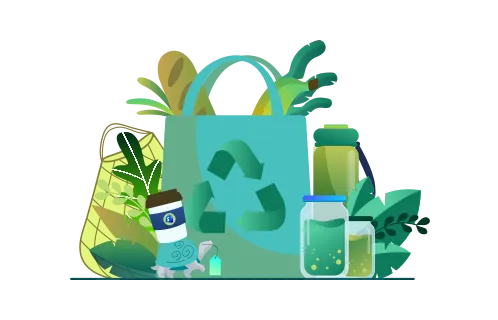
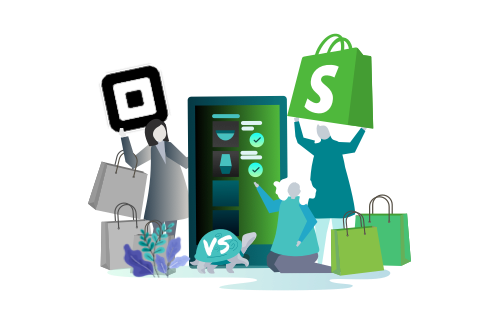

![Shopify Sales Channels [Complete Guide] - GenovaWebArt blog article, banner image Shopify Sales Channels [Complete Guide] - GenovaWebArt blog article, banner image](https://genovawebart.com/hubfs/img/webp/hero-banner-blog-article-shopify-sales-channels.webp)
